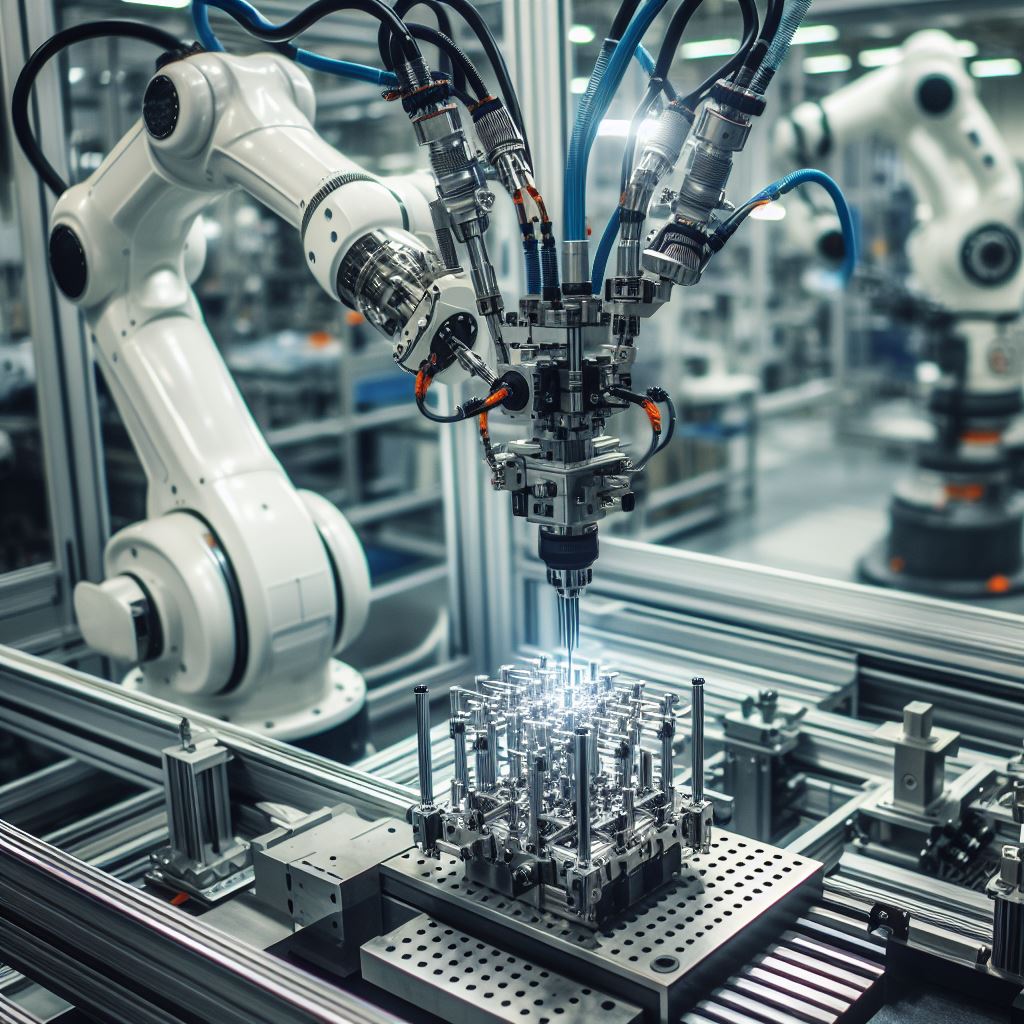Gearboxes are essential core components in the joint drive systems of robots, converting high-speed input into low-speed, high-torque output to provide the required motion power. In the field of humanoid robots, selecting the appropriate gearbox type is crucial for achieving flexible, accurate, and efficient motion control. This article explores the applications of various gearboxes in humanoid robot components and discusses their advantages, disadvantages, and suitable scenarios.
1. Harmonic Drive Gearboxes
Harmonic drive gearboxes, also known as strain wave gears or cup-type gearboxes, are a compact and efficient type of gearbox. They utilize a flexible, circular spline to engage with a rigid, elliptical wave generator to achieve high gear reduction ratios. Due to their unique structure, harmonic drive gearboxes offer the following advantages:
Thanks to their compact design, high reduction ratios, and lack of backlash, harmonic drive gearboxes are widely used in the joint drive systems of humanoid robots, particularly in areas with strict volume and weight requirements, such as arms and legs. However, their main drawbacks include limited service life, susceptibility to wear, and relatively high cost.
2. Planetary Gearboxes

Planetary gearboxes are another type of gearbox widely used in robotics. They consist of one or more planetary gear stages, each comprising a sun gear, multiple planet gears, and an internal ring gear. The planet gears rotate between the sun gear and the ring gear, achieving gear reduction. Planetary gearboxes offer the following advantages:
With their high load-carrying capacity, compact design, and high efficiency, planetary gearboxes are commonly used in load-bearing areas of humanoid robots, such as the waist and torso, as well as joints requiring high output torque, like the shoulders and hips. However, planetary gearboxes require high manufacturing precision and have relatively high costs.
3. Cycloidal Gearboxes
Cycloidal gearboxes utilize two or more cycloidal discs in mesh to achieve gear reduction. Their main performance parameters are as follows:
Due to their ability to withstand extremely high torque and radial loads, cycloidal gearboxes are commonly used in the large joint drive systems of humanoid robots, such as hip and knee joints.
4. Worm Gearboxes
Worm gearboxes achieve gear reduction through the meshing of a worm and worm gear. Their main performance parameters are as follows:
In the field of humanoid robots, worm gearboxes are primarily used in joint drive systems with high reduction ratio requirements and less stringent load capacity requirements, such as wrist and finger joints.
5. Electro-Mechanical Actuators
Electro-mechanical actuators integrate an electric motor and a planetary gearbox into a single unit, offering advantages such as a compact design and high precision. Their typical performance parameters are as follows:
Electro-mechanical actuators are commonly used in precision motion control applications of humanoid robots, such as finger joints and eye motion mechanisms, enabling high-precision motion control.
| Parameter | Harmonic Drive | Planetary Gearbox (3-stage) | Cycloidal Gearbox | Worm Gearbox | Electro-Mechanical Actuator |
|---|---|---|---|---|---|
| Reduction Ratio Range | 1/30 ~ 1/320 | 1/64 ~ 1/512 | 1/8 ~ 1/200 | 1/5 ~ 1/100 | 3 ~ 200* |
| Rated Torque/Output Torque | 0.1 ~ 4000 Nm | Max 800 Nm | 10000 ~ 300000 Nm | 50 ~ 1000 Nm | 0.16 ~ 20 Nm |
| Repeatability | ±1 ~ 3 arc-mins | ±20 ~ 60 arc-secs** | ±20 ~ 60 arc-secs | ±1 ~ 3 arc-mins** | ±8 ~ 90 arc-secs |
| Allowable Input Torsional Vibration | ±5% ~ 10% | ±1% ~ 3%** | – | – | – |
| Service Life | 100 million ~ 1 billion cycles | >20,000 hours** | >30,000 hours** | >10,000 hours** | >20,000 hours** |
| Maximum Input Speed | 3000 rpm** | 6000 rpm | 2000 rpm** | 3000 rpm | 8000 rpm |
| Radial Load Capacity | 980 ~ 68600 N** | 5000 ~ 15000 N | 3000 ~ 80000 N | 5000 N** | 800 N** |
| Transmission Efficiency | 60% ~ 90%** | 90% ~ 98% | 96% ~ 99% | 45% ~ 90% | 70% ~ 90% |
| Self-locking Efficiency | – | – | – | 30% ~ 50% | – |
| Noise Level | ≤70 dB** | ≤58 dB** | ≤65 dB** | ≤65 dB** | ≤58 dB |
*Based on common electro-mechanical actuator products
**Supplemented with typical industry values and empirical data
Conclusion
By comparing the performance parameters of the different gearbox types, it is evident that they vary significantly in terms of reduction ratio range, load capacity, efficiency, noise level, and other aspects. System designers need to carefully evaluate the specific application requirements and trade-offs among various performance metrics to select the optimal gearbox solution. As technology advances, gearboxes will continue to evolve towards higher efficiency, more compact designs, and increased intelligence, enabling superior motion performance for humanoid robots.
